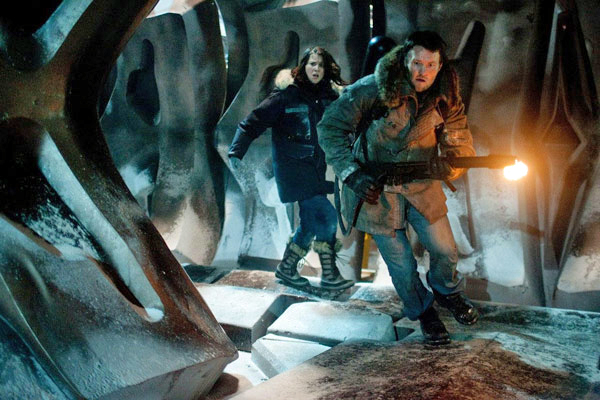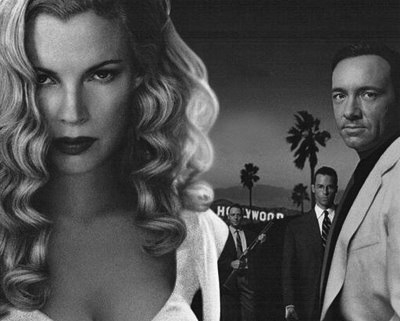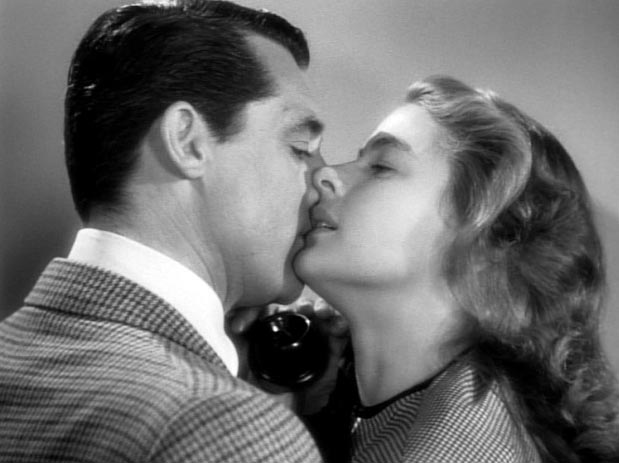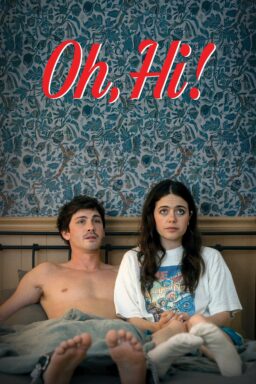Q. I was watching “Godfather II” the other day and remembered that the scene with Vito sitting on the steps with his family, after he has killed Fannuci, was originally intended to lead into an intermission, which was scrapped somewhere along the way. I’m pretty sure James Cameron never intended on having an intermission for “Titanic,” but let’s pretend the studio asked you, an up and coming editor, to find a place to insert one. Even though you know it was wrong and that Cameron would surely kill you, where would you have put an intermission? (Frank Mendez, Dallas, TX.)
A. Naturally, I’d follow the time-honored tradition of the Perils of Pauline and put the intermission right at the point where they’re desperately trying to steer away from the iceberg.
Q. With all the “Titanic” special effects hoopla–well-deserved, I might say–I was wondering if you remembered a near-forgotten movie from the early 1960s called “The Last Voyage.” I saw it a long time ago and all I remember is the wonderful Woody Strode galloping through the ocean liner rescuing people as the big boat sank. And Robert Stack was in it. But here’s what I seem to recall about that movie: They filmed it on a real ocean liner and the director actually sank it for the movie and filmed it. Could this be right? (Lee Bey, Chicago)
A. I greatly doubted that could be true, but I looked it up in Cinemania, and discovered from Leonard Maltin that, indeed, “To heighten the realism of the film, they really sank a ship.”
Q. In your most recent Answer Man column, Paul Florance of Seal Beach, CA commented on the possible remake of “Shall We Dance” and added, “Be afraid. Be very afraid.” Who originally said this now famous tag line, and in what movie was it used? It seems to pop up all over the place, and in fact, ABC is currently using it to sell one of their new made-for-TV movies. A friend of mine claims it was originally used in the second Adams Family movie. (Charles Ogan, Naperville, IL)
A. Have your friend check out “The Fly” (1986). The line is used by the Geena Davis character.
Q. That was an interesting Answer Man discussion of how TV reporters are inaccurately portrayed in movies. As a print reporter, let me offer a couple more observations. TV reporters in movies almost always start off their on-scene reports with: “This is Biff Braindead coming to you live from….” In real life, this almost never happens: The studio airheads do the lead-in to the airhead-on-the-street. Also, most TV news and newspaper stories, as reproduced for the movies, are clearly written by people who don’t understand journalism style. TV news is more dependent on active voice and punchy phrasing. But news stories written by screenwriters are almost always drawn out, with a buried lead and oodles of passive voice, the kind of stuff that would never survive a decent editor. This has taken the shine off many movies for me. Maybe moviegoers don’t know the mechanics of “real” journalistic prose, but they know that for some reason the scene doesn’t sound quite right to them. (Leon Lynn, Milwaukee, WI)
A. Even a really savvy movie, “Broadcast News” (1987), made the mistake of having its plot hinge on the producer (Holly Hunter) belatedly realizing the reporter (William Hurt) had faked a reaction shot–something any experienced TV producer would have known the moment she saw it.
Q. You are quite right that Candice Bergen did the voice of SAL 9000, the computer in “2010,” under the pseudonym “Olga Mallsnerd.” But in translating it as “bad Snerd” and interpreting it as a dig at poor Mortimer Snerd, you missed another pun. “Mallsnerd” also seems to suggest the last name of her beloved husband, Louis Malle. (Brian Linehan, Toronto)
A. Without a doubt. Now I’ve set my sights on the deconstruction of “Olga.”
Q. Wouldn’t you agree that the credits at the end of movies nowadays have become ridiculously long, including everyone down to the best boys, animal trainers, tutors, caterers, third-string gaffers and all their children? All I want to see, really, are the names of the actors, next to the names of their characters, and then the song titles. Maybe where the movie was shot if it was an unusual location. If production companies are willing to change the endings of classic stories to suit some test audience in Cucamonga, I hope that a few well-placed complaints might derail this trend toward an endless train of credits. (Bob Carlson, San Antonio, TX)
A. All of those people just love to see their names on the screen. What I would like to see would be useful specific information: Cast names, location info, what substance was used to make the monster slime, whether that was the star’s own dog, where the neat restaurant was, the names of the body doubles, which body parts they doubled for–stuff like that. Jackie Chan has the right spirit in his end titles, when he shows all of his stunts going wrong.
Q. There’s a moment in Stanley Kubrick’s “The Shining” when Jack Nicholson’s little boy is riding a big wheel through the Overlook Hotel. Kubrick’s technical prowess always amazes me, but particularly here–not to mention the use of sound (the difference between the wheels turning on the carpet and on the wood floor is beautiful). The scene seems so difficult that it must have been shot with a Steadicam. As the film was released in 1980, I wondered if that date is indeed too early for this technique. When did Steadicam shots start to crop up in films? (Mark Collins, Auburn, Ala.)
A. Steadicams, which are harnessed to a cameraman and counterweighted to minimize camera movement and vibration, were first used by Haskell Wexler in his Oscar-winning cinematography for Hal Ashby’s “Bound for Glory” (1976). Another memorable early Steadicam use is in James Crabe’s shot that follows Sylvester Stallone, as Rocky, up the steps of the art museum in Philadelphia.











